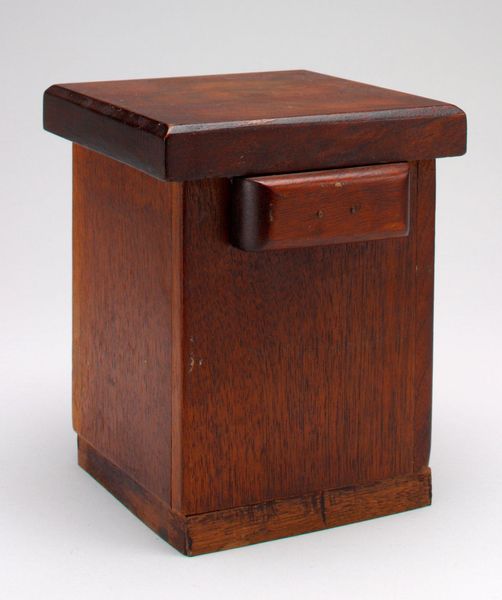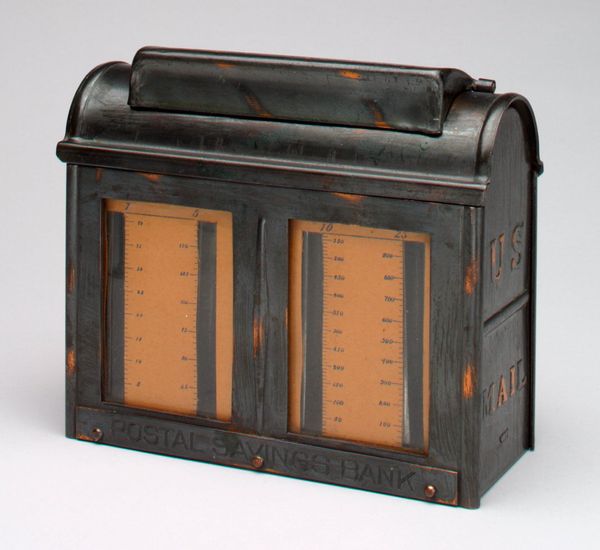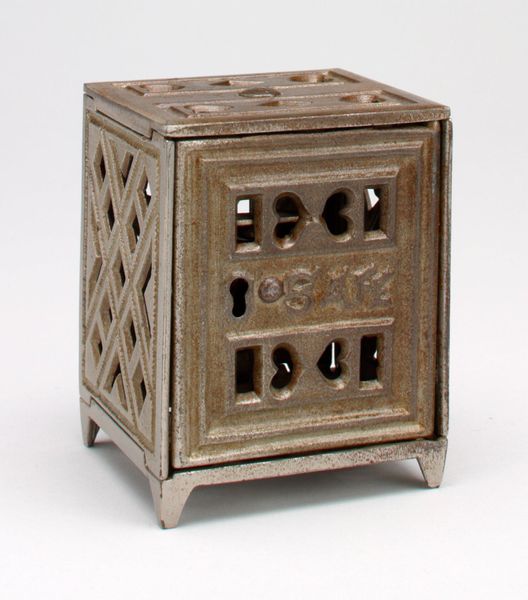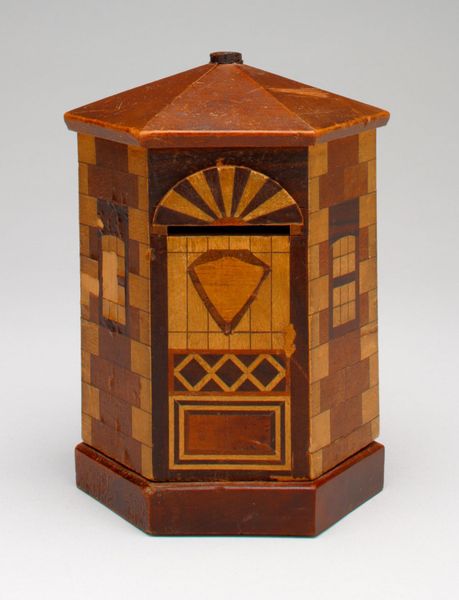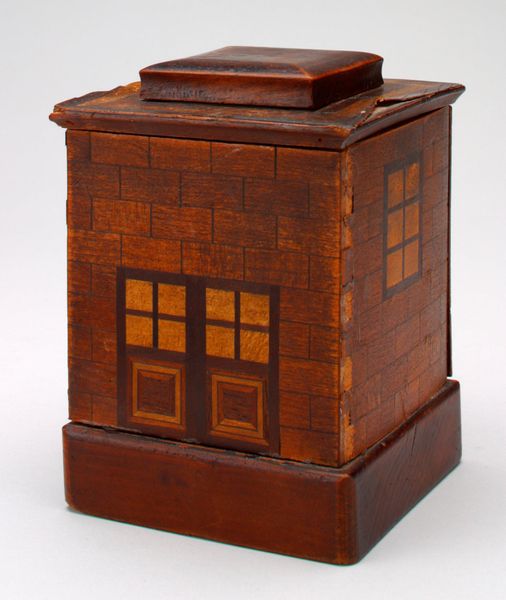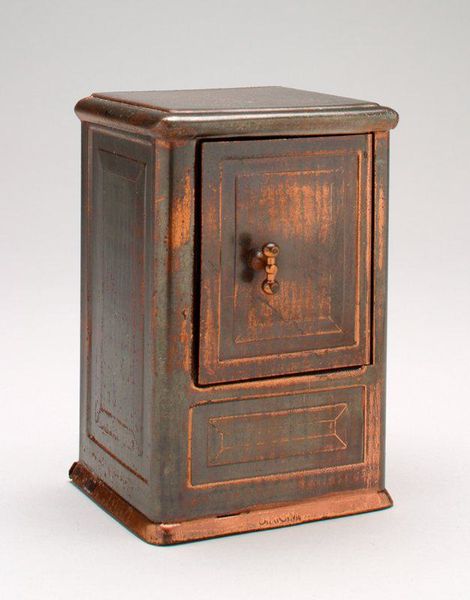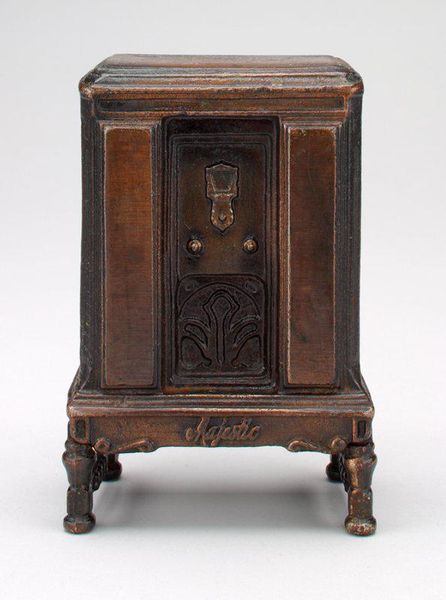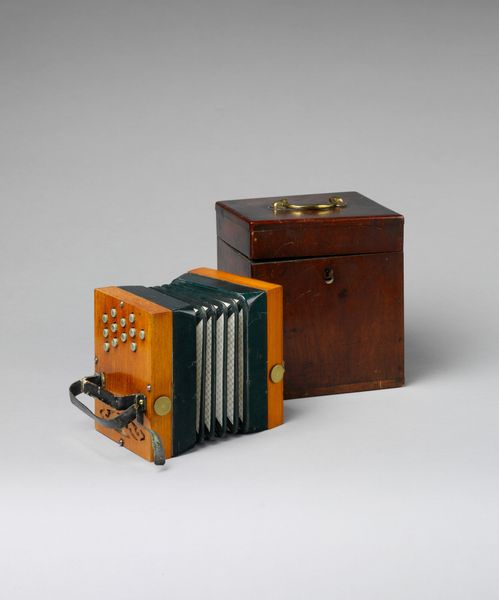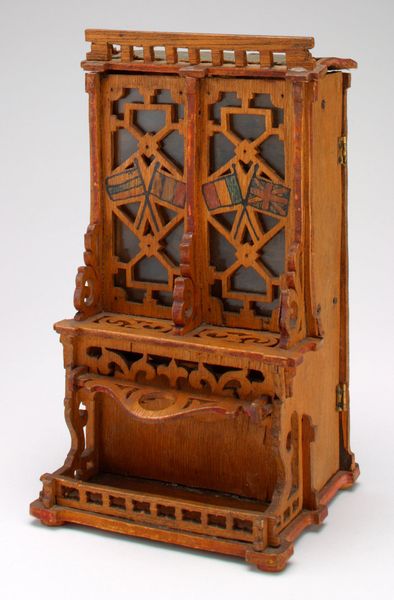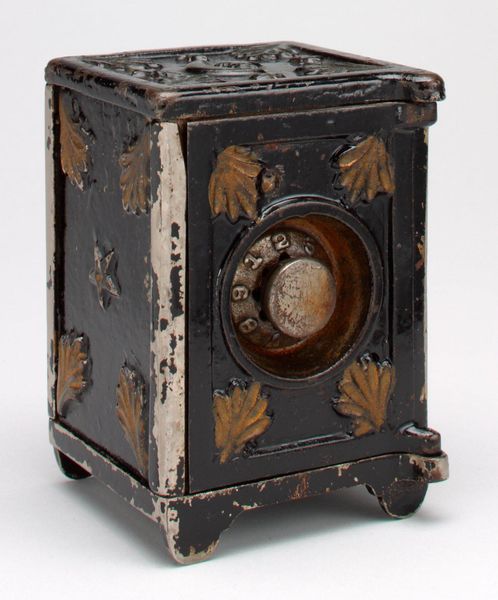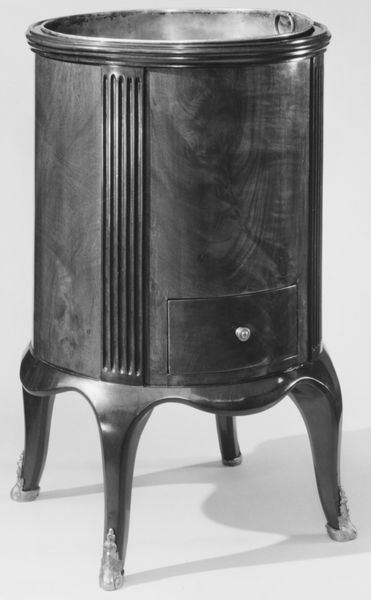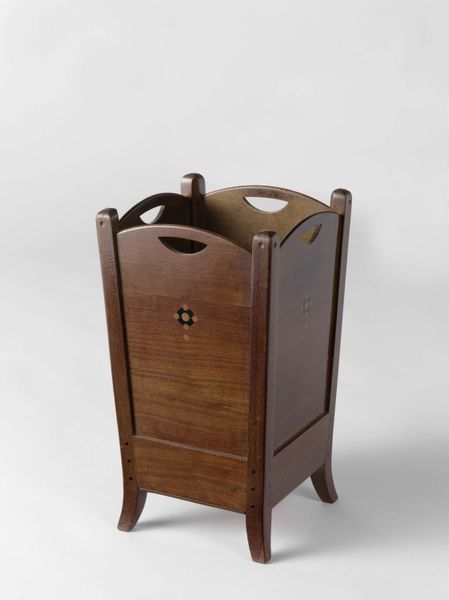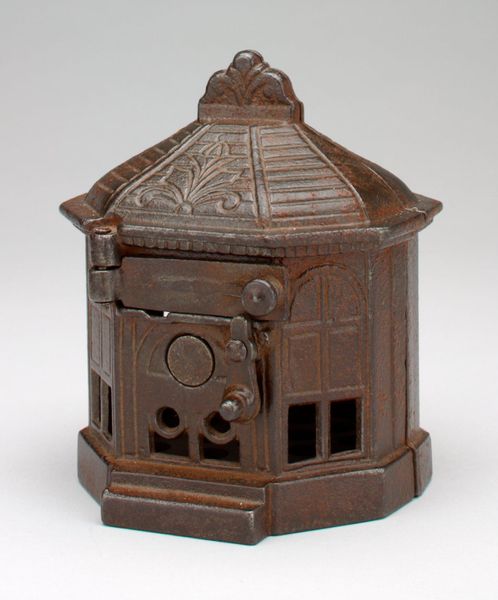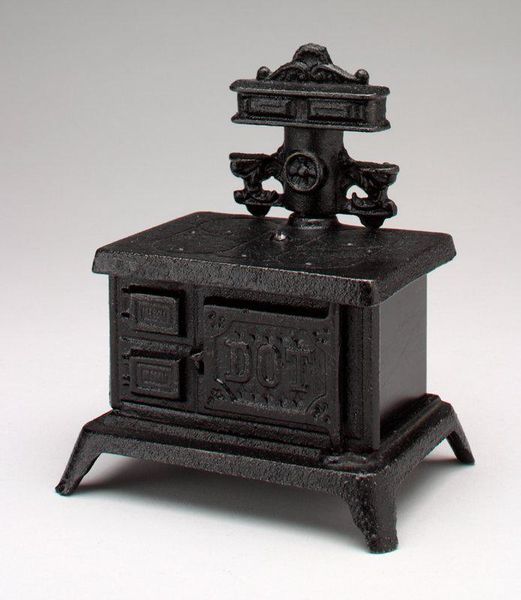
-Globe Glow Boy (stove)- still bank c. early 1920s - 1930s
0:00
0:00
assemblage, metal, found-object, sculpture
#
assemblage
#
metal
#
sculpture
#
found-object
#
sculpture
#
decorative-art
Dimensions: 5 3/8 x 2 3/4 x 2 3/4 in. (13.65 x 6.99 x 6.99 cm)
Copyright: No Known Copyright
Curator: Here we have a “Globe Glow Boy” still bank, an object dating roughly from the early 1920s to 1930s, attributed to American Art Works, Inc. You can find it here at the Minneapolis Institute of Art. Editor: Well, first impressions – it's surprisingly ornate for what is, essentially, a cast iron box. All those little flourishes and curves... it seems more like a miniature monument than a piggy bank. Curator: Exactly! It speaks to the proliferation of domestic consumerism at that time. Marketing permeated every aspect of life. Even something as utilitarian as a stove was ripe for branding and miniature replicas, like this one, served as promotional items. It wasn’t just about saving money; it was about aligning with a lifestyle, purchasing power as a family value. Editor: I’m struck by the materiality, the density of it. It's cold to the touch, yet suggestive of warmth – ironic, given its function. And consider the labor! From casting the metal, assembling the components to even giving it that lustrous, bronze-like finish, a chain of working class labor made it possible. It turns something simple, like saving change, into an expression of production itself. Curator: Good point. Its aesthetic echoes the broader decorative arts movement, influencing furniture and architecture alike, pushing mass production and artisanal craftsmanship simultaneously. Editor: This also served a deeper purpose—shaping childhood financial behaviors. Imprinting the ideas of value and saving, but within the sphere of commerce. Children saving up for… what? Probably something produced by another industrialized labor chain. Curator: It does seem like such a clear representation of those complex intersections between economy, material culture, and childhood in early 20th century America. Editor: Absolutely, it provides a tangible object that bridges art, industrial production and the construction of economic identity. Curator: Indeed, viewing it in this way has further illuminated the piece. Editor: Likewise. Thinking about what went into making something so commonplace adds a deeper resonance for me.
Comments
No comments
Be the first to comment and join the conversation on the ultimate creative platform.
